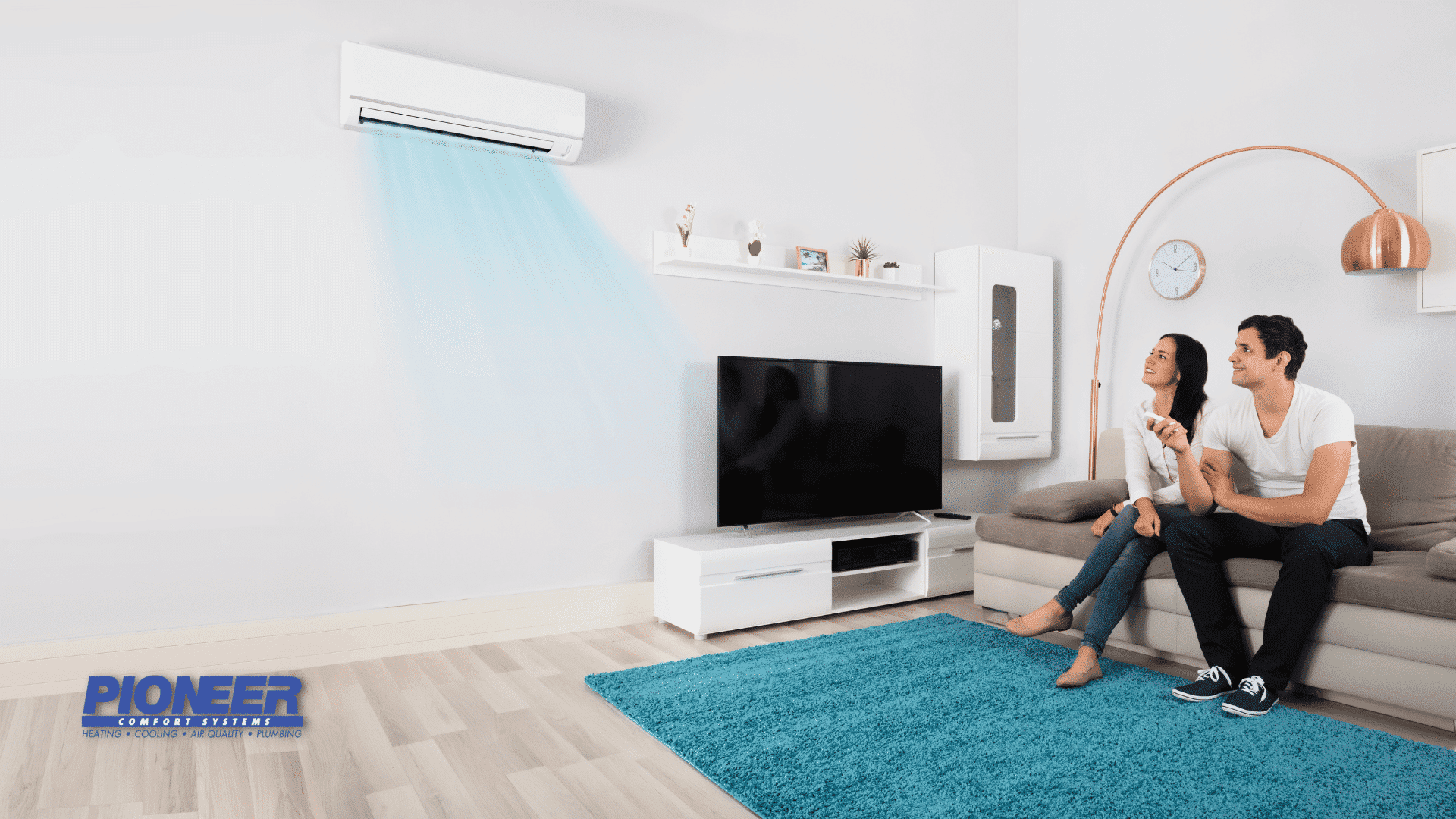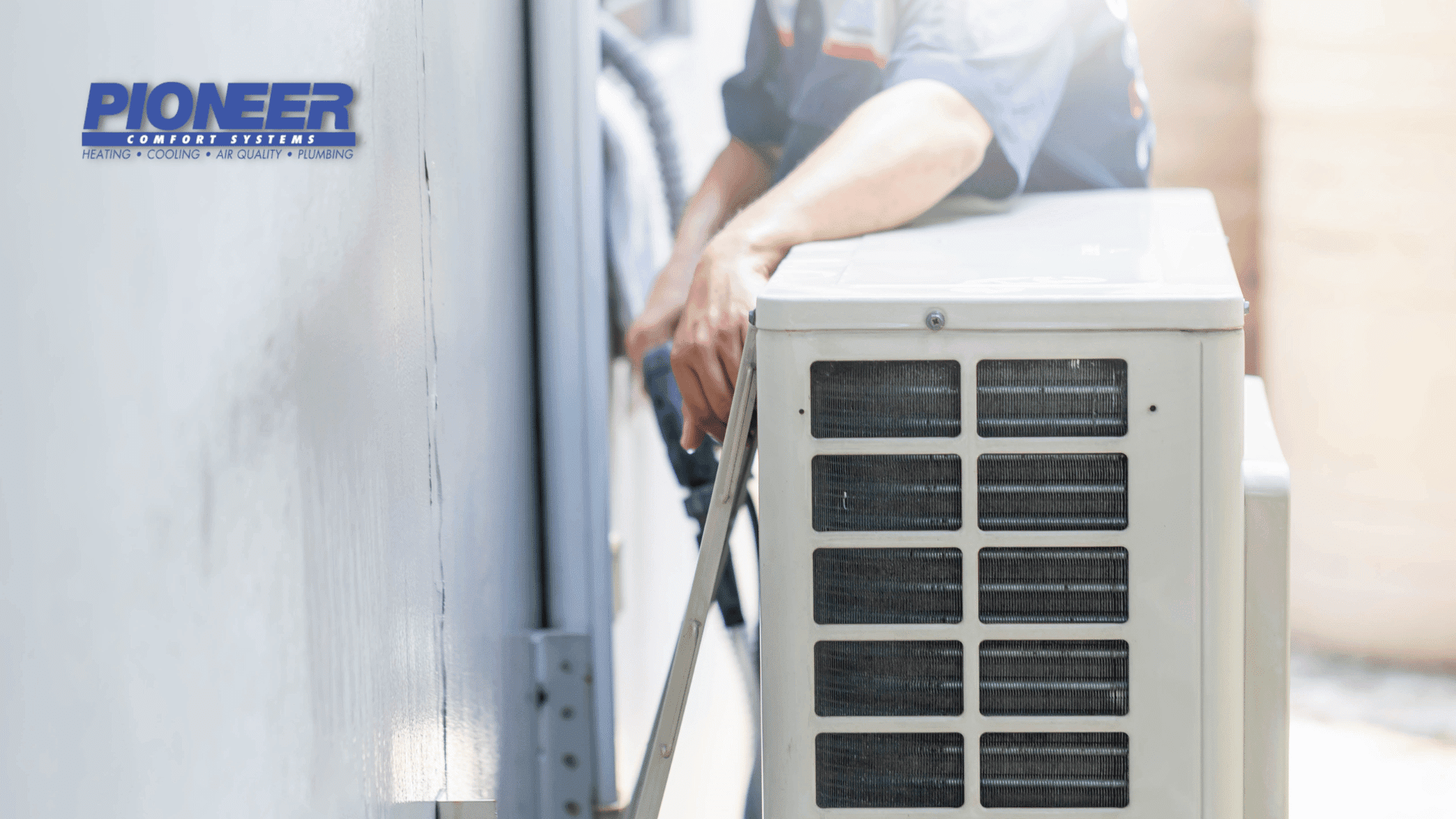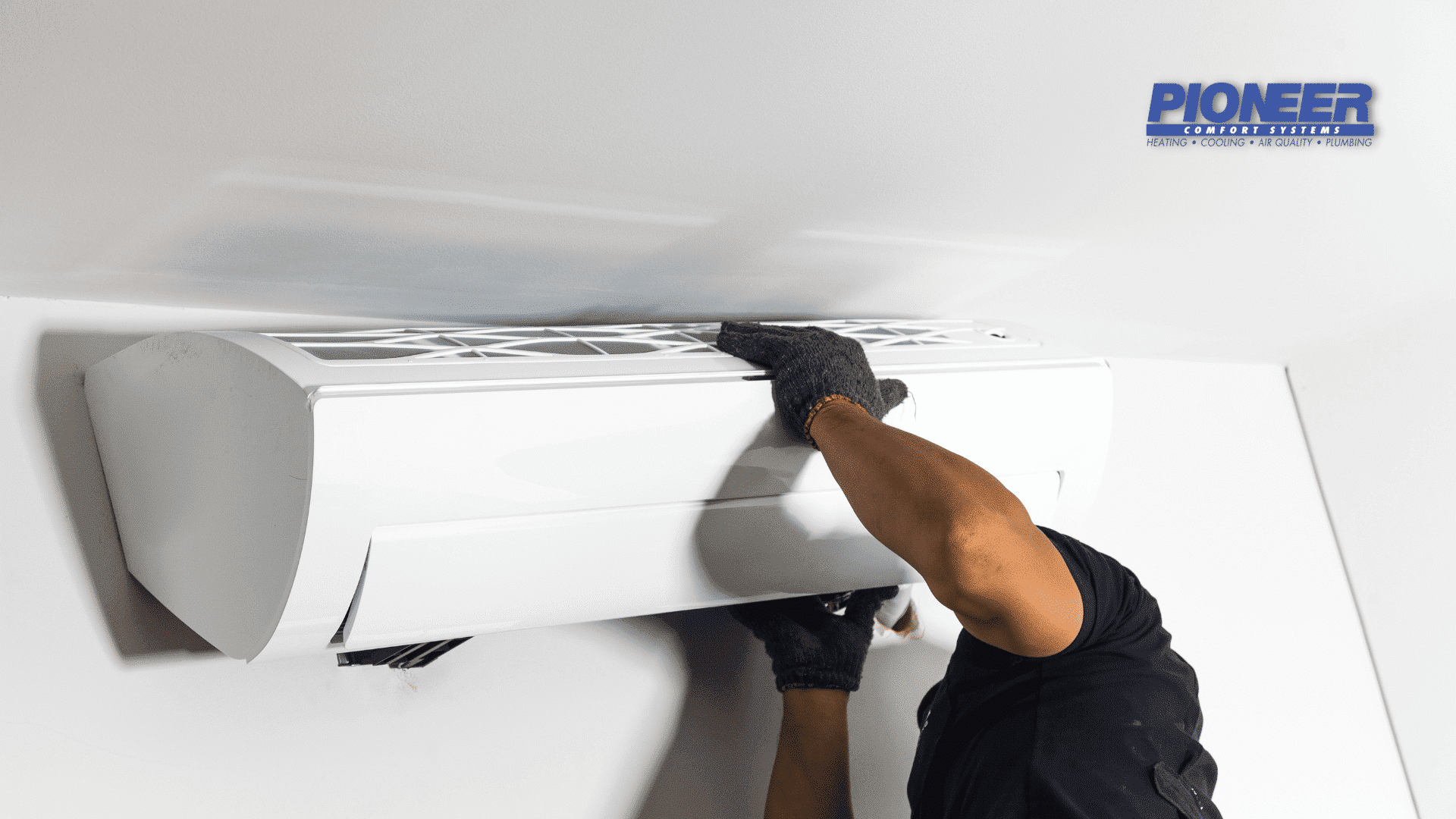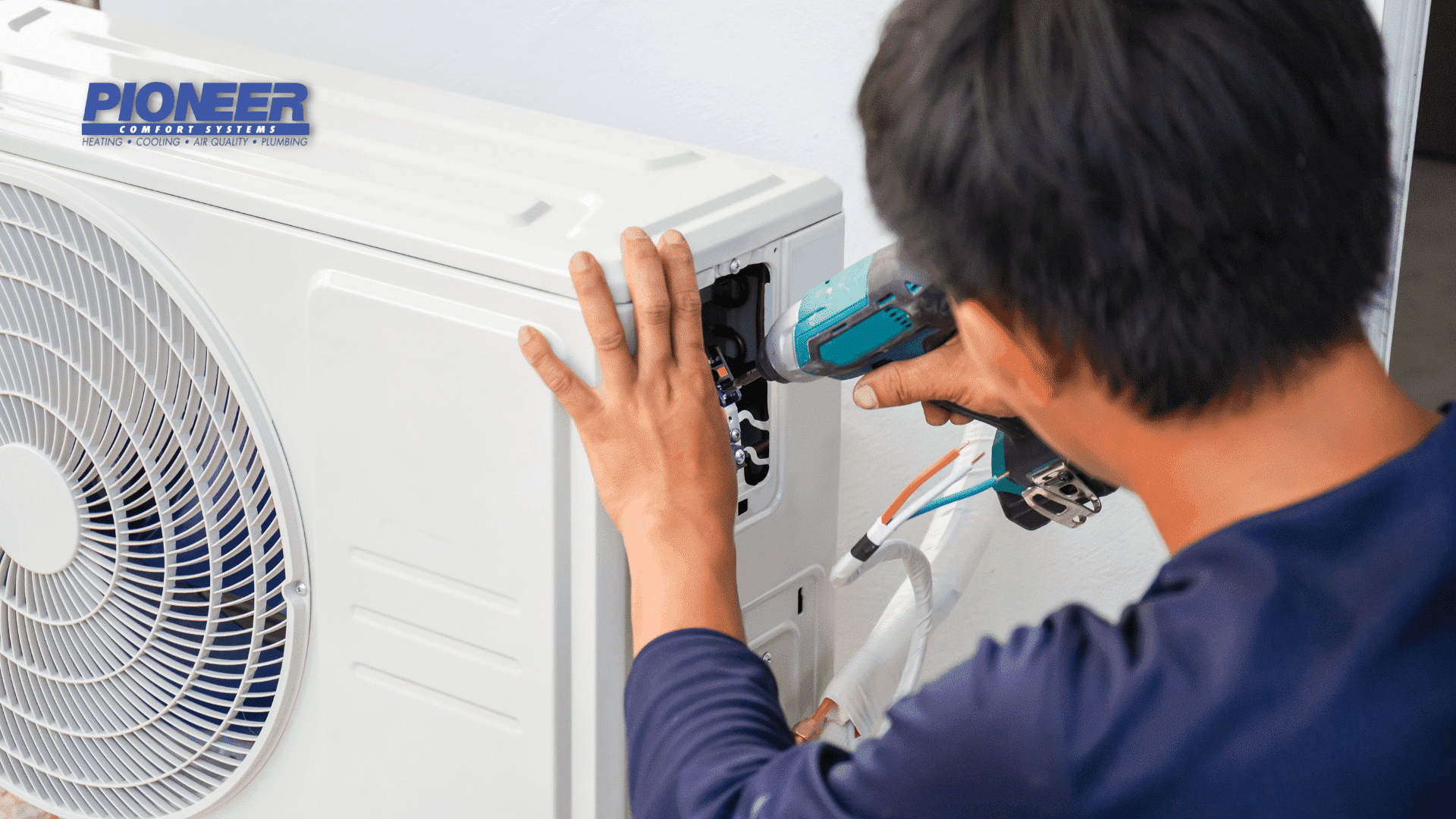Installing a new HVAC system is a considerable undertaking. When you’re considering HVAC replacement or installation, you want to know that your Shreveport HVAC installer is providing the best quality equipment and services to get the most out of the system.
At Pioneer Comfort Systems, we’ve been servicing the Shreveport-Bossier area for over 60 years. Our Shreveport HVAC installers can perform even the most complex installation and are ready to handle yours.
If you need a new HVAC system installed in Shreveport, call the HVAC pros at Pioneer Comfort Systems today.
The Importance of Proper HVAC Installation in Shreveport
Purchasing a new HVAC is a huge expense, but the HVAC installation cost should also be considered. At Pioneer Comfort Systems, our Shreveport AC installation team receives continuing education to ensure they are adequately trained on the entire HVAC system to handle any HVAC repairs or installations.
While HVAC replacement costs can be high, our Shreveport HVAC company provides a thorough site evaluation, including checking existing ductwork before replacing HVAC components.
Understanding HVAC Systems
Our HVAC systems may seem like their only functions are heating and cooling, but HVAC units are so much more complex than that. A well-maintained HVAC system should provide a clean, quality air source that isn’t humid and maintain your home’s temperature.
When your HVAC system isn’t working correctly, it can make your home or business feel stuffy and uncomfortable. This is why it’s essential to consult with a professional Shreveport HVAC installer before installing a new HVAC unit.
What are HVAC Systems?
HVAC systems are an acronym used to describe residential and commercial heating and cooling systems. The acronym stands for heating, ventilation, and air conditioning.
It’s easy to intermingle HVAC and AC when describing our home comfort systems, but AC only refers to the air conditioning part of the HVAC unit. In fact, your HVAC system may not have an actual air conditioner at all.
The HVAC system comprises multiple components that work together to heat or cool our home or business. These components can be found both within the inside unit and outdoor unit. While many different parts of an HVAC system exist, here are the most well-known elements.

Air handler
This part is responsible for circulating warm and cool air created by other parts of the HVAC unit.
Thermostat
This part of the system you use to control the temperature. Adjusting the temperature on your thermostat signals the rest of the system to make your home warmer or cooler.
Duct System
This part makes up a more extensive system of ducts, like pipes, installed throughout your home. The air ducts are responsible for taking the heated or cooled air produced by the furnace, heat pump, or air conditioning unit and distributing it throughout your home.
Heat pump
While you may think this part is only responsible for providing heat, it can also be an air conditioner to cool your home. Heat pumps rely on refrigerant to heat the air or cool it off, depending on the set temperature.
There are two major types: air source and geothermal heat pump.
Geothermal heat pumps utilize constant temperatures from the ground to extract or dissipate heat. In contrast, air source heat pumps extract heat from the outdoor air and transfer it inside during winter months. In the summer months, it reverses the process
Furnace
Furnaces produce heat by burning fossil fuels like propane or gas. That heat is then carried through your home using other HVAC system components.
There are three major types of furnaces: oil furnaces, gas furnaces, and electric furnaces.
Oil furnaces use oil as the fuel source; gas furnaces use natural gas, and electric furnaces rely on electricity.
Air conditioner
Our favorite part of the HVAC system in the south is the AC unit. The air conditioner focuses on circulating cool air while removing humidity and heat from the air and moving it outside.
Functions of an HVAC System
All the instruments of your HVAC system work together to create comfortable air for your home.
Here are the functions of all three parts and how they work together to create your home comfort system.
Heating
The heating element of your HVAC will be a furnace or heat pump. Systems with a furnace will also have a burner and ignitor that heat the air. Heat pumps will use condenser and evaporator coils to heat the air (when used for heating.)
Ventilation
The ventilation portion of the HVAC system consists of air ducts, air vents, exhaust fans, and air filters. These components work together to take the warm or cool air created by the heater or AC unit and distribute it into all home areas. Ventilation is part of the HVAC system we often forget or overlook. Even the most expensive HVAC systems will have reduced air quality if they aren’t installed correctly.
Air conditioning
There are several types that are commonly used for cooling residential and commercial spaces. Some of the main types include:
- Central air conditioner: Central air conditioners typically use central AC units to cool the building. The central air conditioner consists of an indoor unit that contains the expansion valve and evaporator coils, while the central air conditioning outdoor unit has the condenser coils, cooling fan, and compressor.
- Window AC unit: Window AC units are self-contained and are suitable for cooling small rooms.
- Split System: Split system conditioners have separate indoor and outdoor unit that is connected by refrigerant lines. With the split system, the indoor unit is typically mounted and distributes cooled air, while the outdoor unit contains the condenser and compressor.
- Ductless Mini-Split: This is similar to the split system but does not require existing ductwork for air distribution. They consist of an outdoor unit and one or more indoor units. This allows for zoned cooling in different areas.

Assessing Your Needs for a New HVAC System
HVAC units aren’t one size fits all. You can create your HVAC system to meet your heating and cooling needs. During your HVAC consultation, your HVAC installer will evaluate your home, your current heating and air conditioning system and will ask questions about your family’s preferences and expectations for HVAC installation costs.

Heating and Cooling Units: Requirements for Shreveport's Climate
Your climate is a determining factor when building your HVAC system.
In Shreveport, the primary purpose of an HVAC system is to provide cool air.
This means that you don’t have to worry about a freezing climate where the heating element may not provide the level of heat necessary. Places up north that experience much colder climates often need a backup heating system.
If your HVAC system includes a well-working air conditioning component, you can choose the type of heating system you want to be installed.
Evaluating the HVAC Size and Capacity Required for Your Home or Office Building
During your HVAC consultation, your technician will perform a Manual J load calculation to measure your home’s cooling and heating needs. Using this information, they will determine how large your new air conditioning system or HVAC system needs to be.
Skipping this portion of the HVAC installation consultation can be a huge mistake.
By not considering those elements, homeowners often get a unit that is too large or small. When your HVAC unit is the incorrect size, you can struggle with high energy bills, inconsistent temperatures, and a unit that requires frequent maintenance due to overworking itself. A unit that is too big or small will never be able to meet the temperature inside adequately, which will lead to you replacing the unit sooner than expected.
Considering Energy Efficiency and Environmental Factors
As the technology surrounding HVAC systems continues to improve, so does the level of efficiency. If your current HVAC is over ten years old, chances are the average cost of every energy bill is on the high side. This is because newer units require less energy to perform.
The HVAC system’s efficiency is measured by the SEER rating (seasonal energy efficiency ratio). The higher the SEER rating, the more efficient the system. You don’t need an air conditioner, heat pump, or furnace with a necessarily high SEER rating to be efficient, though. When you upgrade your current system with a newer one, you’ll most likely see an improvement in efficiency and costs. In some cases, you can still save money, even with a lower SEER rating.
For many homeowners, the reduction in energy bills is enough to justify or offset the HVAC replacement cost.
Selecting the Right HVAC System
Our HVAC professionals will help you select the right HVAC system for your home. Once they’ve performed the Manual J load calculation, evaluated your current system, and discussed your preferences, they can help point you in the right direction.
Types of HVAC Systems Commonly Installed in Shreveport
When you work with Pioneer Comfort Systems on your HVAC installation, you can rest assured that you receive the highest quality HVAC equipment from American Standard. No matter your budget, you can choose from various options, from American Standard air conditioners, furnaces, heat pumps, and air handlers.
We also sell American Standard HVAC coils because having the highest quality products inside your HVAC unit and out is important to running the most efficient system.
If you want to add an air purifier to your HVAC system, we offer the American Standard Perfect Fit Air Cleaner. This air purification system is energy efficient, using even less energy than a 40-watt bulb.
To learn more about the American Standard HVAC equipment we offer at Pioneer Comfort Systems, call (318) 378-5729.
Factors to Consider When Choosing an HVAC System for Installation in Shreveport
When deciding between air conditioners, heaters, and ventilation for your new HVAC system, there are many factors to consider before purchasing. Your Pioneer HVAC installer will discuss the options available to fit your home and your heating and air conditioning needs.
Here are the most common factors to consider:
- Air quality
- Average cost
- Is it compatible with a smart thermostat or home automation?
- Energy efficiency
- Warranties
- Sound
- How much maintenance will be required?
- Capacity (your HVAC tech will tell you what you need)
While your HVAC installer can guide you through certain areas when narrowing down your choices, it’s important to consider the above when shopping for your new system.

HVAC Installation Process
Now that you’ve completed the consultation phase of your HVAC installation, now comes the actual installation. Installing an HVAC system is extremely complicated and is best left to the professionals. They will have the proper equipment and tools and ensure that your home is prepared beforehand and have the necessary permits for the installation.
Your HVAC installation is more than just replacing one part of the system. It requires access to the ductwork, your inside and outside units, and more.
Preparations and Site Assessment
The first part of the installation process is inspecting the site where your new system will be installed. This is especially important if you’re installing a central air conditioning unit since there will be a unit inside and outside. The technicians will need to ensure that there are no trees or bushes surrounding the installation site and make adjustments for removal if so.
The technicians will also ensure that nothing is missed during the pre-installation appointment. This will include double-checking current ductwork and anything else not scheduled to be replaced. This way, the team will know if additional equipment or tools will be needed for the installation.
Removing Old Equipment From the Existing System
On the day of your installation, your Pioneer Comfort Systems team will safely remove your current system. This is important because refrigerant removal must follow EPA guidelines and can be dangerous. Our technicians are certified in refrigerant removal and will dispose of the substance accordingly.
After the refrigerant has been removed, the technicians will remove the old HVAC wiring once the electrical panel on the circuit breaker has been turned off. When all wiring has been safely disconnected and removed, the current system can be taken apart by removing the evaporator coil and copper line set. The removal of these components is complicated as they can often be found in areas that are difficult to access, like underground or in your ceiling.
Once the old system has been removed, your technicians can determine if the ground beneath your current system has sunken. Your HVAC technicians will prepare the foundation for the new system by leveling it and securing a new pad for the unit.
HVAC System Retrofitting
You may opt for a retrofit if your installation isn’t a complete HVAC system replacement. Retrofitting is updating some HVAC components that have become outdated or inefficient with newer ones. It’s common for some parts of your HVAC to wear out before others, so we offer this as an option. If most parts are in working order, there’s no reason to replace an entire unit or system.
An HVAC retrofit could be as simple as replacing an evaporator coil to replacing your furnace. During your installation consultation, your Pioneer technician will discuss a retrofit if they find that some parts of your HVAC system are still functioning properly.
Installing New HVAC System Components
Once the old system has been removed, your HVAC team will begin to install your new system. Your technicians will install your new indoor evaporator coil and move on to the new copper line set. Once those have been installed, your technicians will inspect your new unit for damages before they prepare to set it. This is important because the components within the system are delicate and can be difficult to move once the system is in place, so any problems with the new unit need to be addressed beforehand.
Once the new unit has been inspected and placed, the technicians will install the various electrical components and wiring. Your new system will also receive a new condensate drain line that will help prevent water leaks and other damage from moisture buildup in your unit.
Ensuring Proper Airflow and Ventilation
Once the system’s installation has been completed, your HVAC installer will turn on the new system to ensure it is working properly. Our technicians must always evaluate this to ensure no problems with the system, ductwork, or ventilation. After your new air conditioning system or heating element has been running, your HVAC installer will inspect your home to ensure all rooms receive the same level of airflow and indoor air quality.
Adjusting the New HVAC System for Optimal Performance
Your HVAC installer would have recommended any repairs or replacements during your HVAC installation. However, years after having the system installed, if you notice decreased functionality, it may be a problem with the air ducts. Over time, air ducts can start leaking. This can cause your system to work at least 30% less efficiently. If you suspect that you have an air duct leak, call Pioneer Comfort Systems.
Scheduling routine maintenance on your new HVAC system can also help ensure everything works effectively. At Pioneer Comfort Systems, we provide Shreveport HVAC maintenance services.
Your maintenance appointments should be made twice a year, before the temperature gets too extreme. During these appointments, your technician will check everything from the coils, and motor, to the drain and refrigerant lines.
If you struggle with remembering to schedule your annual maintenance appointments, you can sign up for Pioneer’s annual maintenance plan.
Ensuring Your New Heating and Cooling System Complies with Permits and Regulations
When you work with an experienced HVAC company like Pioneer Comfort Systems, you can rest assured that your HVAC installation and equipment meet the required codes and regulations.
At Pioneer, we’re always staying on top of the latest changes to HVAC regulations. Our technicians go above and beyond what’s required from state and local regulations to ensure you receive the highest level of service.
HVAC Installation Cost in Shreveport: Budgeting and Financing Options
Pioneer Comfort Systems offers financing options so you don’t sweat over the HVAC installation costs. We also provide specials for our customers that are constantly changing to fit the HVAC needs of the changing seasons. To learn more about our current specials, call (318) 378-5729.
Long-Term Benefits: Evaluating Return on Investment for HVAC Installation in Shreveport
When you install new HVAC units, you increase the ROI for your home’s value. While you may not be considering selling your home soon, HVAC replacement can increase your home’s resale value by 20-30%.
Additionally, new HVAC systems can help save money on energy and utility bills monthly.
To continue saving and maintaining the value of your new system, budget for routine maintenance services. Not only does it extend the lifespan of your system, but it can also continue saving you money well into the years.
Hiring a Professional Shreveport HVAC Contractor
At Pioneer Comfort Systems, our HVAC contractors always pull HVAC installation permits.
Every HVAC contractor on staff receives continuing education to ensure they’re on top of the latest HVAC technologies. When you choose Pioneer for your Shreveport HVAC installation or HVAC replacement, you can guarantee that your new system installation will be the best in the business.
Why You Need to Work With a Qualified and Experienced HVAC Contractor
It’s essential to research the company handling your installation to ensure that they perform quality work and meet the required regulations throughout the entire HVAC installation process.
It can be easy for someone to learn how to provide HVAC services, but maintaining the proper training and qualifications for professional installation is much more difficult.
Questions to Ask Potential HVAC Contractors Before HVAC Replacement
When going through the HVAC installation process, asking the following questions is important.
- How efficient will my new HVAC be?
- What are the latest technologies available?
- What brands do you service and sell?
- What size unit do I need?
- What are your payment options?
- What warranty and guarantees does this system come with?
- Will I be able to use my current ductwork?
- Do you handle the permits?
- When will the job be finished?
- Are there any tax rebates for the installation?
Our HVAC techs are prepared for your questions, so don’t hesitate to ask!
Maintaining Manufacturer Warranties: Professional Installation for HVAC in Shreveport
Once your installation is complete, it’s time to maintain the warranty and equipment. Caring for your HVAC will ensure that it stays compliant with the warranty and other guarantees the manufacturer has in place.
So it’s important to check your air filters once a month and call our Shreveport HVAC pros when you suspect issues.
Homeowners can prevent HVAC issues by scheduling maintenance appointments twice a year. During this appointment, we will ensure that all components of your heating and cooling system are working properly so that you don’t have problems when the weather reaches extreme levels.

Pioneer Comfort Systems: The Best Choice for All of Your Heating, Ventilation, and Air Conditioning Needs
Now that you’re familiar with the HVAC installation process, you can schedule your consultation with a Shreveport HVAC installer from Pioneer Comfort Systems. We will be with your every step of the way, from the initial consultation to the equipment decisions, installation, and more. Call (318) 378-5729 to schedule your installation consultation appointment today.

